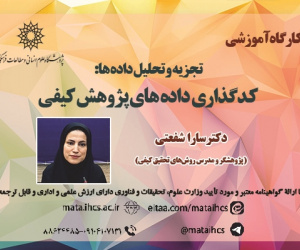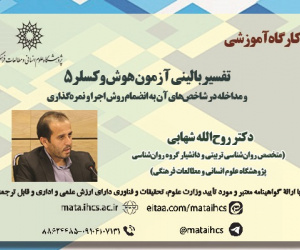نسبت امر زیبا و امر اخلاقی در بوطیقای زیبایی شناسی مولانا با تکیه ویژه به مثنوی (مقاله علمی وزارت علوم)
درجه علمی: نشریه علمی (وزارت علوم)
آرشیو
چکیده
در این جستار با رویکردی بینارشته ای به شیوه تحلیل محتوا به بررسی نسبت امر اخلاقی و امر زیبا در بوطیقای زیبایی شناسی مولانا در مثنوی پرداخته شده است. یکی از تناقضات برجسته در مثنوی مولانا وجود الفاظ مستهجن و ناهمواری است که مولانا در حکایات به کار برده است. این پژوهش می کوشد به این پرسش ها پاسخ دهد که چگونه این شاهکار بزرگ ادب فارسی، با وجود این تناقض های اخلاقی بازهم از حیث هنری زیباست؟ مولانا از چه شگردهایی بهره برده که از ارزش اخلاقی و زیبایی هنری آن کاسته نشده است؟ در مثنوی ، معیارهای سنجش اثر هنری دگرگون شده و مولانا داوری در باب زشتی یا زیبایی شاهکار ادبی خویش و دریافت و فهم آن را به جهان اثر واگذار کرده است. در پرتو این تدبیر هوشمندانه، واکنش مخاطب نسبت به حکایات مستهجن، در دو جهان بیرون و درون متن متفاوت است؛ یعنی اگر مخاطب آن الفاظ مستهجن را در جهان بیرون متن ببیند، آن را زشت و زننده و دارای بار معنایی منفی خواهد دید اما اگر از منظر جهان درون متن بدان بنگرد و در بافت متن ببیند، عین هنر خواهد بود. در زیباشناسی مولانا در مثنوی ، آن تعابیر مستهجن نتیجه اخلاقی عکس داده و زشتی الفاظ عین زیبایی شده است. این رویداد مهم خود از آن روست که در بوطیقای زیبا شناسی مثنوی ، امر بیرونی -بیرون از جهان هنر و متن- تعیین کننده نیست بلکه تنها و تنها خود اثر است که مبیّن نقص هنری یا زیبایی هنری خود است. این پژوهش می تواند به مثنوی پژوهان پیشنهاد کند متن کلاسیک مثنوی را کمی از سایه سنگین مؤلف در معنای خدای پنهان متن بیرون آورند.The Relationship between the Beautiful and the Moral in Rumi's Aesthetic Poetics with Reference to the Masnavi
In this study, the relationship between the moral and the beautiful in the aesthetic poetics of Rumi (Maulana), specifically in his Masnavi, has been investigated with an interdisciplinary approach to content analysis. One of the prominent contradictions in Rumi's Masnavi is the presence of obscene and rough words that Rumi uses in stories and parables. This research tries to answer the questions how this great masterpiece in Persian literature is still artistically beautiful despite these moral contradictions and what techniques or devices Rumi employs in the Masnavi which do not diminish its moral value and artistic beauty. The research shows that in the Masnavi the criteria for evaluating the work of art has been changed and that Rumi has left judgment on the beauty and ugliness of his literary masterpiece as well as the perception and understanding of it to the world of the work. In the light of this clever plan, the audience's reaction to it, including the reaction to its obscene anecdotes, is different in the two worlds outside and inside the text; that is, if the audience see those obscene words in the world outside the text, they will find them ugly and charged with negative meanings, but if they look at them from the perspective of the world inside the text and see them in the context of the text, they will be utterly artistic and pure art. In the aesthetics of Rumi in his Masnavi, obscene stories and phraseology lead to opposite moral results and the ugliness in expression turns into utter beauty. This significant occurrence is the outcome of the fact that in the poetics of the Masnavi the external — outside the world of art and text — is not determinant; rather, it is only and only the work itself that reveals its artistic defect or beauty. This study can suggest to the Masnavi scholars to take the classical text Masnavi a little bit out of the heavy shadow of the author as the hidden god of the text.








